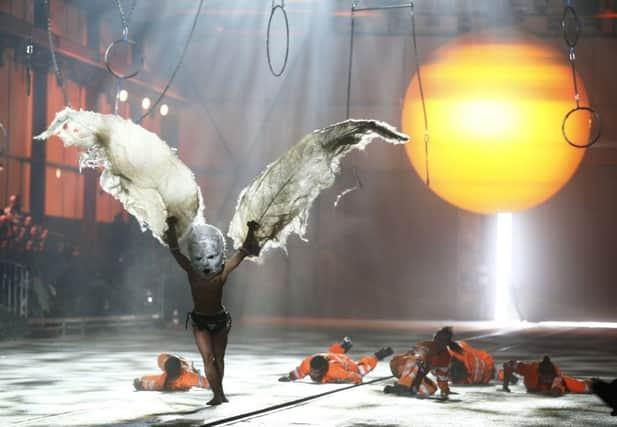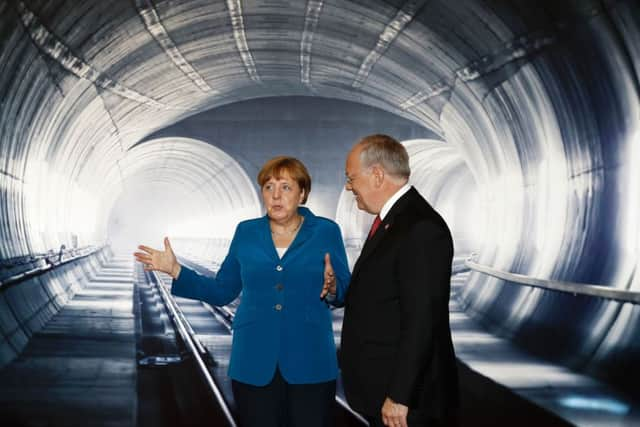Swiss open world's longest and deepest rail tunnel after 17 years and £8.3bn


Swiss engineers have built the 57km (35-mile) twin-bore base tunnel to provide a high-speed rail link under the Alps between northern and southern Europe to ease trade and tackle congestion. Opened today, the Gotthard Railway Tunnel was carried out on time and on budget over 17 years at a cost of 12.2 billion Swiss francs (£8.3 billion).
Many tunnels today crisscross the Swiss Alps, and the Gotthard Pass already has two – the first, also a railway tunnel, was built in 1882. But the Gotthard Base Tunnel is a record-setter, eclipsing Japan’s 53.8-km Seikan Tunnel as the world’s longest and bores deeper than any other tunnel, running about 2.3km (1.4 miles) underground at its maximum depth.
Advertisement
Hide AdAdvertisement
Hide AdThe route aims to cut travel times, ease roadway traffic and draw cargo from pollution-spewing lorries trucking between Europe’s north and south. Once it opens for commercial service in December, the two-way tunnel will take up to 260 freight trains and 65 passenger trains per day.


Swiss planners have dreamt of such a tunnel for decades and it should have an impact far beyond Switzerland for decades to come.
Switzerland pulled out the stops for Wednesday’s inauguration. German Chancellor Angela Merkel, French President Francois Hollande and Italian Prime Minister Matteo Renzi were all on hand for a glitzy celebration featuring musical bands, dancers and even a tunnel theme song.
The EU turnout is little surprise: The project, while cutting a north-south axis through central Switzerland, has received financial support and industrial know-how from around the European Union. Though Switzerland is not one of the bloc’s 28 members, the EU railway network will get a major boost from the shortcut through the Alps – notably on the route from Germany to Italy.
Like many Swiss trains, the project has come in on schedule. Guy Parmelin, the Swiss minister of defence and civil protection, said the tunnel gives his country a chance to display its “know-how” and show “when Switzerland takes on a commitment, it keeps it”.


Forces under Parmelin’s command were taking little chance with security for the inauguration, with almost 2,000 extra Swiss troops called in to keep watch this week, and air space restrictions put in place. The tunnel runs between the German-speaking town of Erstfeld in the north and Italian-speaking Bodio in the south.
The project was endorsed by Swiss voters in a referendum in 1992. Voters then backed a proposal from environmental groups to move all freight travelling through Switzerland from road to rail two years later. The tunnel travels far below the surface of the mountains above and through rock hitting temperatures of 46C.
Engineers had to dig and blast through 73 different kinds of rock, some as hard as granite and others as soft as sugar. More than 28 million tonnes of rock was excavated.
Advertisement
Hide AdAdvertisement
Hide AdThe completed tunnel will create a mainline rail connection between Rotterdam in the Netherlands and Genoa in Italy. Its trajectory will be flat and straight instead of winding up through the mountains like the old rail tunnel and a road tunnel opened in 1980.
About 260 freight trains and 65 passenger trains will pass through each day in a journey taking as little as 17 minutes.
The tunnel is financed by value-added and fuel taxes, road charges on heavy vehicles and state loans. Swiss bank Credit Suisse said economic benefits will include the easier movement of goods and increased tourism.